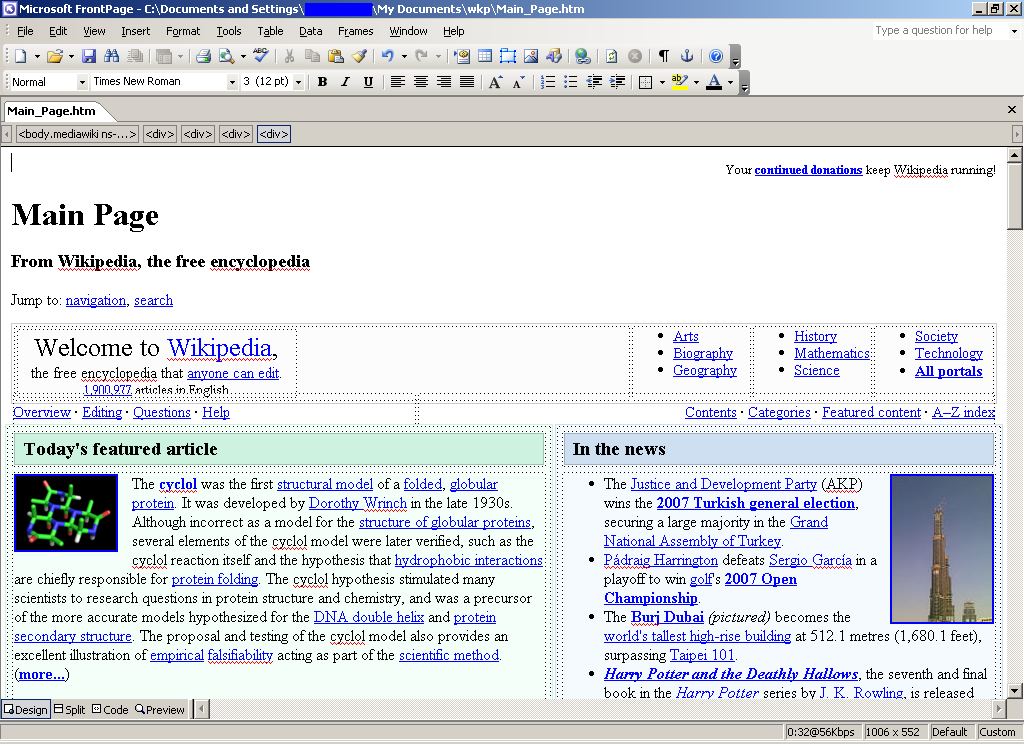

- HOW TO USE MICROSOFT OFFICE FRONTPAGE 2003 HOW TO
- HOW TO USE MICROSOFT OFFICE FRONTPAGE 2003 SOFTWARE
On a large shopping site, all the information you see when you conduct a search or click a product details link comes out of a database. This kind of link between tables is a basic attribute of relational databases.ĭid the site's creator anticipate your search terms and have, ready-and-waiting, two separate results pages? And what happens next when you click a link for product details? Did your bookseller create a single HTML page for each of the thousands of products on her site? No way. How do you know which of the artists from the Artists table (at top) created the pieces in the ArtWorks table (at bottom)? You can solve the puzzle by matching up numbers in the ArtistID field. You get a similar list of matches, but this time "Charlie and the Chocolate Factory" is on top.įigure 16-3. Next, you enter the same search term again but add the word "Charlie" to it. Say you're at your favorite bookseller's site and you enter in some search words like "Roald Dahl." The site presents you with a list of matches. Think about the last time you shopped for books online.
HOW TO USE MICROSOFT OFFICE FRONTPAGE 2003 HOW TO
Sure, you need some HTML, so the browser knows how to display page elements, but you also need to throw in some serious scripting. To take data directly from a database and display it on a Web page, you'll need more than plain old HTML. In Figure 16-3, the ArtistID and WorkID columns carry out this duty in each table. A simplified example of how this relationship works is illustrated in Figure 16-3.Įach database table has one column called the primary key, which the database program auto numbers to ensure that each record has one unique identifier. The value in this field matches up with one record in the Suppliers table, which includes additional details like supplier location and contact information that you wouldn't want cluttering up your Products table. The Supplier field is different from these other fields, because you don't just type in the supplier name, you get it from another tablethe Suppliers table.

Each product record contains information fields like Product Name, Price, and Supplier.

For example, the Northwind database includes a Products table, which lists all the products the company offers. Many of these tables are linked to each other by at least one field, creating what's known as a relational database. But most databases are more complex and contain many tables. If your database has just one table (which makes it a flat-file database), life will be blissfully simple. When you create a form ( Forms and Databases), each field corresponds to a table column. Each column stores a single type of information: Last Name, First Name, and so on. Each row contains one person's information. This table from the Northwind sample database shows employee data. To locate the Northwind sample database, look in C:\Program Files\ Microsoft Office\Office\Samples or search your C:\ drive for the file Northwind.mdb.įigure 16-2. To see what one such table looks like, you can open the sample database that comes with FrontPage (see Figure 16-2). Another table could track vendor names and contact information, and yet another might hold customer records. One table of a database might contain a list of products. A database is made up of tables, whichlike the folders in your doctor's officegroup records that contain similar information. You can think of a database as the digital equivalent of those file folder stacks. You stop in for a visit and the receptionist looks through stacks of file folders for your records, which are stored together in a manila folder. What's a Database?Įverywhere you gofrom offices to shops to homespeople need to store information and do so in an organized manner, so they can retrieve it easily. FrontPage needs extra support from the Web server to orchestrate this communications feat.
HOW TO USE MICROSOFT OFFICE FRONTPAGE 2003 SOFTWARE
After you read about what software you need, you can make sure you have all the necessary tools at your disposal. Then find out how it's possible for these technologies to work together. Read on to learn about database basics and dynamic Web pagespages that get generated on the fly, as your visitors request them. If you want your Web pages to display information from a database, you'll need to understand the building blocks that can make that magic happen.


 0 kommentar(er)
0 kommentar(er)
